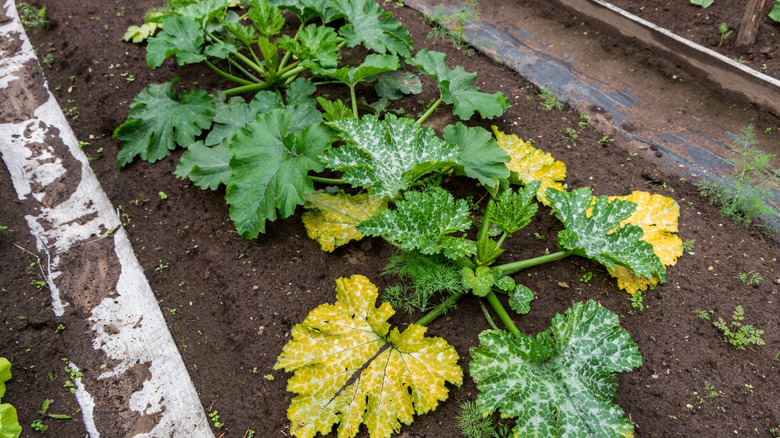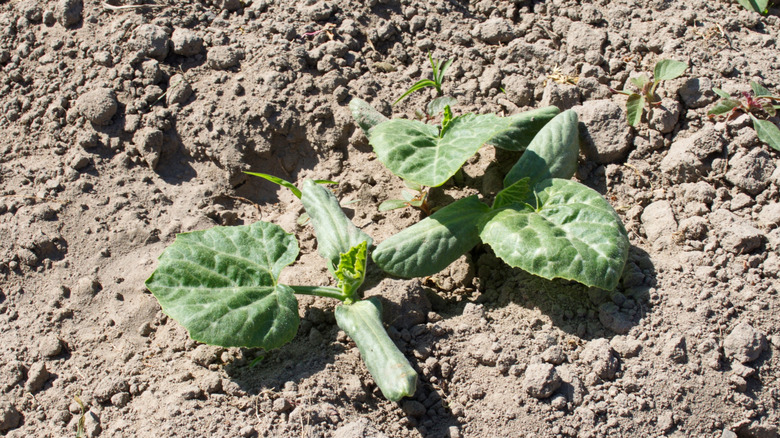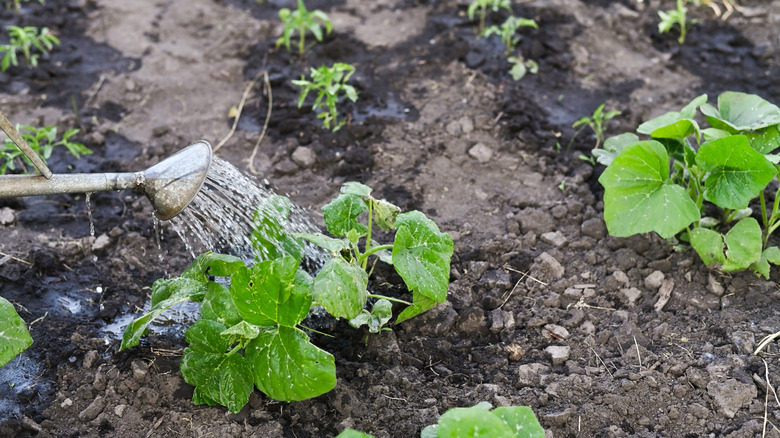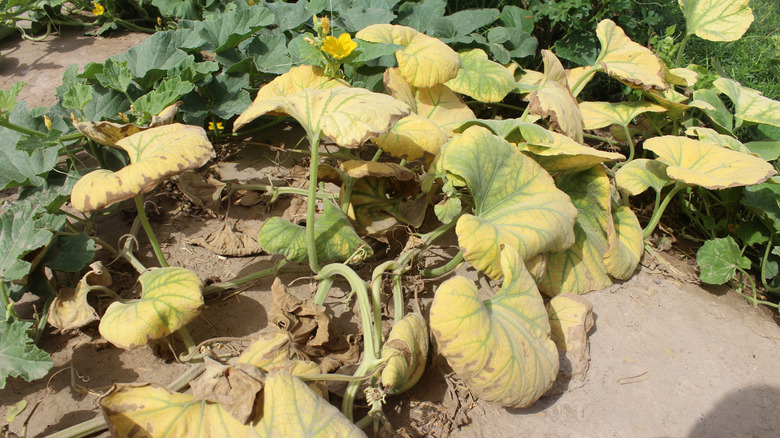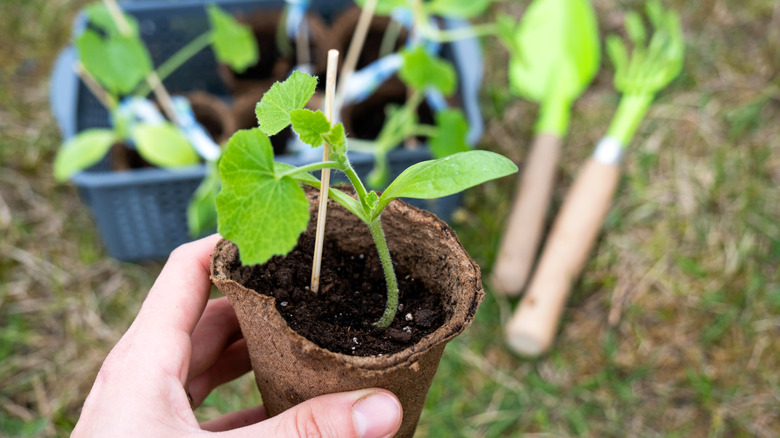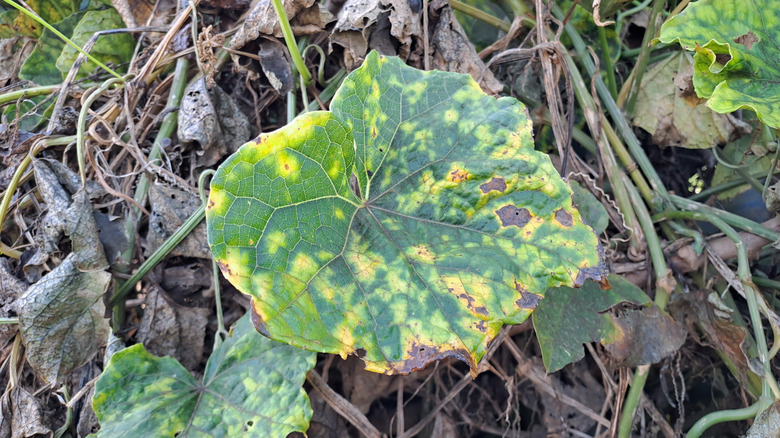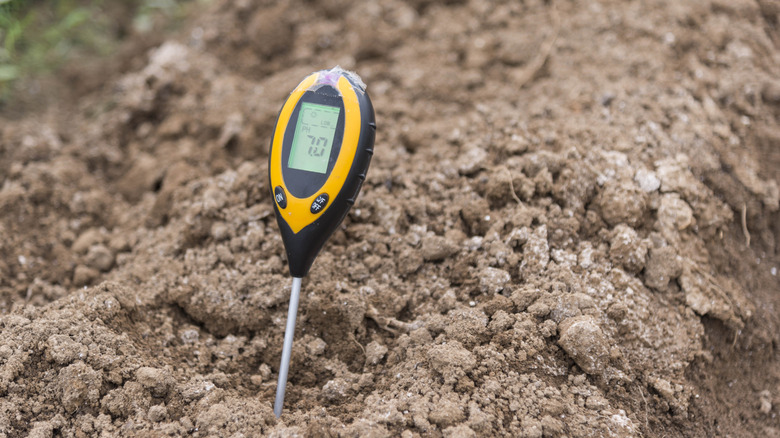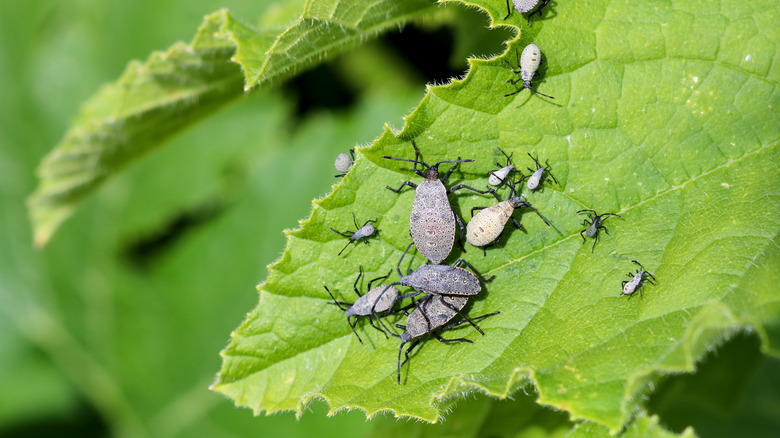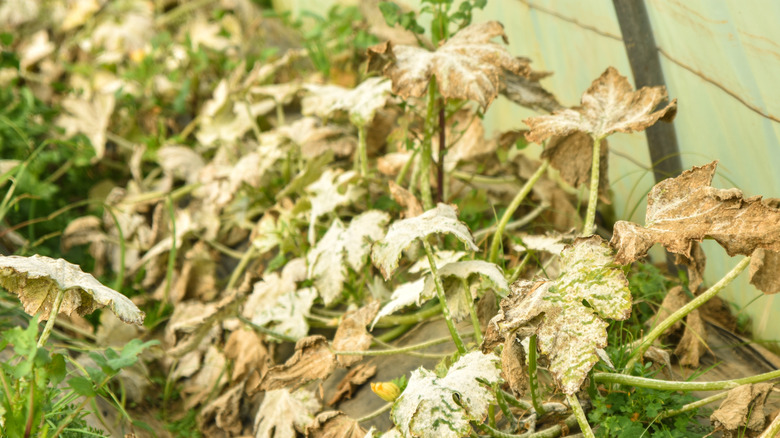8 Reasons Your Squash Plant Leaves Are Turning Yellow (& What To Do About It)
We may receive a commission on purchases made from links.
Whether you're growing pumpkins, zucchini, butternut squash, or spaghetti squash, it's never a good feeling to see your green squash leaves turning yellow. There could be a plethora of reasons why your plants are looking less lively than usual. Maybe you've been overzealous with watering them, or perhaps they've been infected by a pest you didn't know you had in your garden. Whatever the reason may be for the discolored leaves, there's no need to panic. The color change is typically rooted in something that's easy to alter, such as a case of overwatering or wrong pH levels in the soil. However, there may be a reason, like a plant experiencing a pest infestation or disease, that might be more difficult to manage. In cases like this, there may not be a solution to clearing up the yellow leaves.
Yellow squash leaves are a clear sign that there's a problem, but with some investigation, you should be able to pinpoint just what your plants need to bounce back. If you're not sure why your squash plant leaves are turning yellow, and you're not too sure what part of your garden care regimen you need to change, assess the condition of the soil, see if there are any weird spots on the leaves, and check if there are pests hiding underneath the foliage. All of these can be clues into what needs to change to improve the health of your plants.
Underwatering
One possible reason for yellow squash leaves is a simple case of underwatering, especially if the weather is hot. With every variety of plant requiring a different amount of water, it can be difficult to know how much to add, and using simple guesswork is risky. Plus, life gets busy, and let's be honest, sometimes we can forget. In order to produce fruit, squash plants require a minimum of 1 inch of water every single week. If you are growing squash on sandy soil, provide at least ¾ of an inch of water twice a week.
Overwatering
You can also lean too far on the other end of the spectrum and give your squash plants too much water. Not only can this turn the leaves yellow, but the excess water can also lead to mold growth and root rot. If you suspect overwatering as the primary cause, check your soil for roots that are mushy or decaying. It might be worth investing in a soil moisture meter to stay on track.
Nutrient deficiency
If your squash is not getting enough necessary nutrients to grow, its leaves can start to turn yellow. Squash plants may experience deficiencies in calcium, phosphorus, nitrogen, and potassium. The preferred way to see exactly what nutrients your squashes lack is to complete a soil test, which you can do with a kit like this Luster Leaf Rapitest Soil Test Kit. You can also perform a DIY soil test using a mason jar. This test will tell you what type of fertilizer or soil amendment to add to your soil to improve the plant's health.
Not getting enough sun
Squash plants require full sun to flourish, and your yellowing squash leaves might be suffering from a lack of light. Your plants should be planted in full sunlight and receive six to eight hours of sun a day. If you have to transplant your seedlings to another spot in your garden, make sure to do it only once and while they're still young.
Viral infection
Squash plants can suffer and turn yellow from a myriad of viruses, including squash mosaic virus, yellow zucchini mosaic virus, and cucumber mosaic virus. While each of these illnesses causes different types of discoloration in the plant's leaves, the cucurbit yellow stunting disorder virus is a common culprit for yellowing leaves. This disease is carried by whiteflies and can be treated by the removal of the infected plants, whitefly traps, and insecticides that target whiteflies.
Wrong soil pH levels
A squash plant's pH level should be between 6.5 and 7.5. If you perform a soil test and your soil is below this range and too acidic, specifically below 6.2, it's recommended to add lime to decrease the acidity. If your soil is above 7.5, you can increase its acidity by adding sulfur or aluminum sulfate. It's important to note that sulfur takes a long time — up to a few months — to change the pH of the soil.
Pest infestation
Pests are a common culprit behind discolored squash leaves. Insects like striped cucumber beetles, squash vine borers, and squash bugs can eat away at your plant, causing it to wilt. These wilted leaves can get yellow spots, turn brown, and die. Look out for eggs that stick to the underside of your plant's leaves. You can easily remove both eggs and adults by hand and drop them in soapy water. You can also try and trap them by laying out a material like cardboard around the squash plants. The bugs will congregate beneath it at night, making disposal a breeze.
Downey mildew
Downey mildew is another disease that can cause your squash plants to turn yellow. However, unlike powdery mildew, which is a type of fungus that leaves white spots on squash leaves, downey mildew is a type of water mold that leads to the formation of yellow spots. This culprit flourishes in environments with humidity and cool temperatures. To treat plants with downey mildew, first remove any infected areas. Next, ensure that the soil is properly drained and you are not overwatering the plant. It might be time to prune the leaves so your squash can have better circulation.
